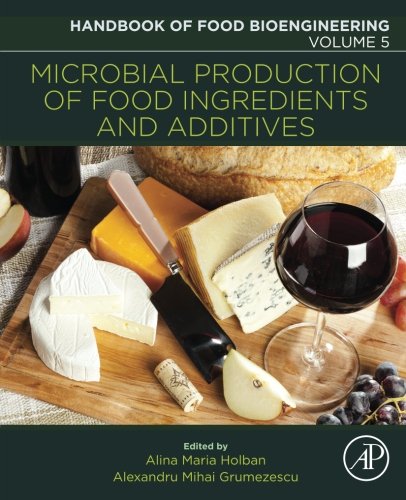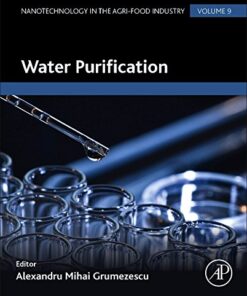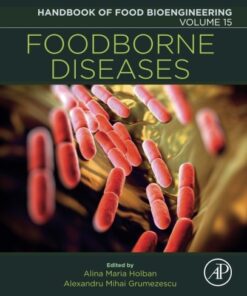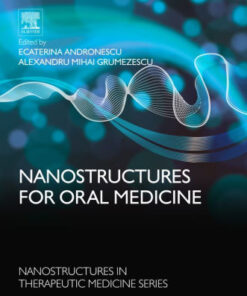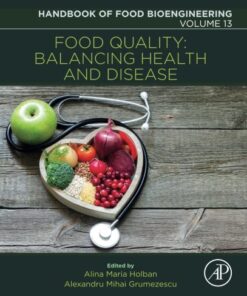(PDF) Microbial Production of Food Ingredients and Additives By Alina Maria Holban
$18.00
Download instantly Microbial Production of Food Ingredients and Additives By Alina Maria Holban, Alexandru Mihai Grumezescu. It is ebook in PDF format.
ISBN-10: 012811200X ISBN-13: 9780128112007
Preview
This is the PDF eBook version for Microbial Production of Food Ingredients and Additives By Alina Maria Holban, Alexandru Mihai Grumezescu
Table of Contents
Foreword
Series Preface
Preface for Volume 5: Microbial Production of Food Ingredients and Additives
Chapter 1: Microbial Production of Added-Value Ingredients: State of the Art
Abstract
1. Introduction
2. Microbial Production of Ingredients
3. Enzymatic Production of Ingredients
4. Conclusions
Chapter 2: Phytase as a Diet Ingredient: From Microbial Production to Its Applications in Food and Feed Industry
Abstract
1. Phytate
2. Phytase
3. Conclusions
Chapter 3: Current Trends and Future Prospective of Prebiotics as Therapeutic Food
Abstract
1. Introduction
2. The Concept of Prebiotics as Therapeutic Food
3. Classification of Prebiotics
4. The Mechanism of Prebiotics
5. Current Trends and Their Applications
6. Cutting-Edge Research and Production Methods of Prebiotics
7. Novel Sources of Prebiotics
8. Safety Consideration of Prebiotics
9. Future Perspectives of Prebiotic Research
10. Conclusions
Chapter 4: Food Ingredients Synthesized by Lactic Acid Bacteria
Abstract
1. Introduction
2. Exopolysaccharides Produced by LAB
3. Aroma Compounds Produced by LAB
4. Polyols
5. Antimicrobial Compounds
6. Vitamin Production by LAB
7. Conclusions and Perspectives
Acknowledgments
Chapter 5: Microbial Diversity and Flavor Quality of Fermented Beverages
Abstract
1. Fermented Beverages
2. Microorganisms Involved in Fermented Beverages Production
3. Volatile Metabolites and Quality of Fermented Beverages
4. Conclusions and Perspectives
Chapter 6: Prebiotic and Synbiotic Foods
Abstract
1. Characterization of Prebiotics
2. Probiotics
3. Application of Prebiotics and Probiotics in Food Products
4. Conclusions
Chapter 7: Production, Use, and Prospects of Microbial Food Colorants
Abstract
1. Introduction
2. History of the Use of Food Colorants
3. Sources of Microbial Food Colorants
4. Qualities of Good-Food Colorants
5. Assay of Microbial Colorants
6. Physiological Basis for Colorant Production in Microorganisms
7. Mechanisms of Colorant Production in Microorganisms
8. Genetic and Metabolic Engineering of Colorant Production in Microorganisms
9. Factors Affecting Growth and Colorant Production in Microorganisms
10. Production and Downstream Processes
11. Applications of Microbial Colorants
12. Market Trends in Microbial Food Colorants
13. Challenges and Limitations to Microbial Food Colorant Exploitation
14. Prospects and Challenges
15. Conclusions
Acknowledgements
Chapter 8: Biopolymer Produced by the Lactic Acid Bacteria: Production and Practical Application
Abstract
1. Introduction
2. Background of Lactic Acid Polysaccharides
3. Production, Isolation, and Purification of EPS
4. Characterization of EPS
5. Application of EPS
6. Future Prospects
Chapter 9: Microbial Production of Low-Calorie Sugars
Abstract
1. Introduction
2. Erythritol
3. Mannitol
4. Xylitol
5. Tagatose
6. Psicose
7. Conclusions
Chapter 10: Microbial Production of Itaconic Acid
Abstract
1. Introduction
2. Definition and Properties of Itaconic Acid
3. Historical View
4. Chemical Route for Itaconic Acid Production
5. Itaconic Acid Production Through Bioprocesses
6. Biosynthesis of Itaconic Acid
7. Food Industry Application
8. Other Industrial Applications
9. Industrial Production and Market of Itaconic Acid
10. Conclusions
Chapter 11: Microbial Production of Secondary Metabolites as Food Ingredients
Abstract
1. Introduction
2. Bioactive Compounds From Microbial Sources
3. Antioxidant and Antimicrobial Activity of Microbial Secondary Metabolites
4. Antibiotic Production From Microorganisms
5. Anticancer Agents From Microorganisms
6. Organic Acids From Microorganisms
7. Bacteriocins
8. Hydrolytic Enzymes From Microbial Sources
9. Agrowaste Residues for Secondary Metabolite Production
10. Strategies to Enhance the Bioproduct
11. Statistical Approach to Optimize Microbial Bioproducts
12. Future Aspects
Chapter 12: Microbial Polysaccharides as Food Ingredients
Abstract
1. Introduction
2. Levan
3. Pullulan
4. Xanthan Gum
5. Curdlan
6. Gellan
7. Chitosan
8. Scleroglucan
9. Concluding Remarks
Chapter 13: Xanthan: Biotechnological Production and Applications
Abstract
1. Introduction
2. Structure and Properties
3. Applications of Xanthan
4. Biotechnological Production
5. Industrial Production
6. Prospects and Challenges
Acknowledgments
Chapter 14: Designer Foods: Scope for Enrichment With Microbe-Sourced Antioxidants
Abstract
1. Introduction
2. Global Market for Designer or Functional Food
3. Free Radicals and the Demand for Antioxidants
4. Sources of Nonmicrobial Antioxidants
5. Microbe-Derived Antioxidants
6. Techniques to Deliver Antioxidants in Foods
7. Regulatory Issues
8. Conclusions
Chapter 15: Monitoring of Microbial Activity in Real-Time
Abstract
1. Introduction
2. Methods in Food Diagnostics
3. Conclusions
Index
